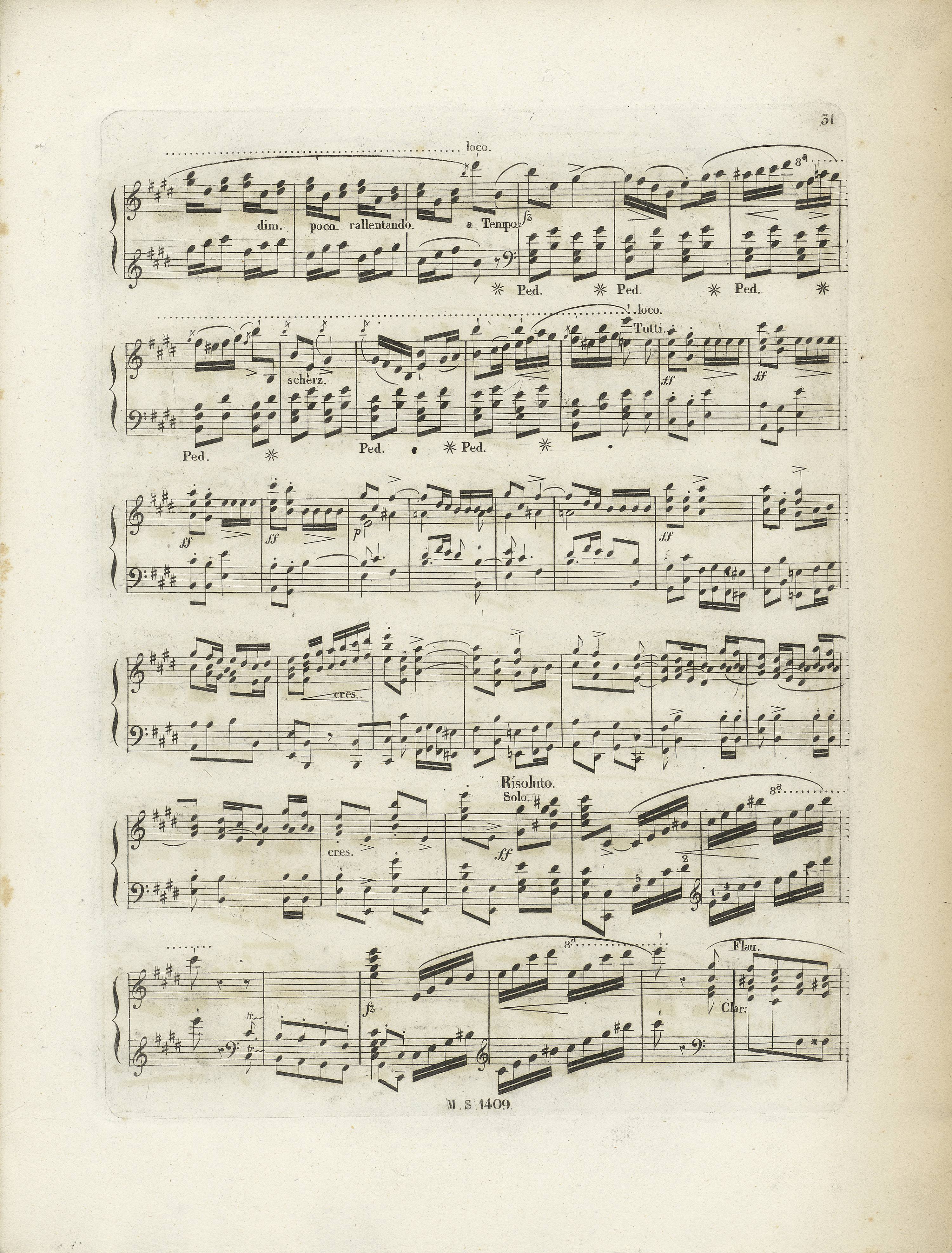Op. 2, Variations in B♭ major
Op. 10, 12 Etudes
Op. 11, Concerto in E minor
Op. 21, Concerto in F minor
Op. 22, Polonaise in E♭ major
Op. 24, 4 Mazurkas
Op. 25, 12 Etudes
Op. 26, 2 Polonaises
Op. 27, 2 Nocturnes
Op. 28, 24 Preludes
Op. 30, 4 Mazurkas
Op. 35, Sonata in B♭ minor
Op. 50, 3 Mazurkas
Op. 63, 3 Mazurkas
Op. 64, 3 Waltzes
(Op. 4), Sonata in C minor




Op. 11, Concerto in E minor, Mvt III
In the main text, we add a staccato dot over the 2nd quaver in the R.H. after the dots in analogous bars 108-109 and 112. Omission of the mark in the fourth and last appearance of the motif must be considered an inaccuracy. Staccato marks (wedges) are present over the respective notes in bars 112 and 113 in violin I in FEorch (→GEorch). As part of numerous additions of articulation marks in this Tutti, a dot was added also in GE3.
Compare the passage in the sources »
category imprint: Differences between sources; Editorial revisions
issues: GE revisions
notation: Articulation, Accents, Hairpins



